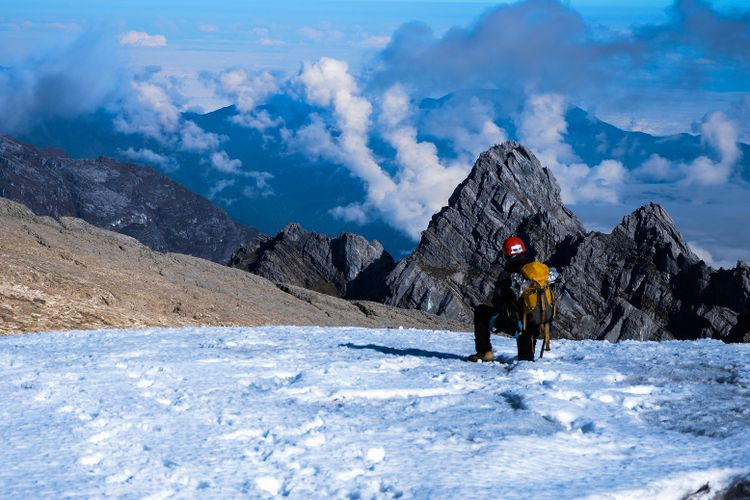Trekking in the Jayawijaya Mountains is one of the most thrilling adventures in Indonesia, offering hikers the chance to explore rugged landscapes, highland valleys, and ancient tribal territories. Renowned for their breathtaking vistas and unique biodiversity, these mountains attract adventure seekers from around the globe. Trekking here is not just a physical challenge but also an opportunity to immerse oneself in local culture and witness one of Indonesia’s most pristine natural environments.
Exploring Trekking Trails in the Jayawijaya Mountains
Trekking in the Jayawijaya Mountains presents a variety of trail options suited for different skill levels. Popular routes often start from Wamena, a town that serves as the gateway to the highlands. From here, hikers can venture into dense forests, alpine meadows, and glacial peaks. The region’s trails are distinguished by steep ascents, rocky paths, and river crossings that require careful planning and physical stamina.
For trekkers seeking a moderate challenge, the trails leading to the Baliem Valley provide a scenic introduction to highland trekking. Hikers traverse lush valleys dotted with traditional Dani villages, allowing them to witness local customs and community life. More experienced adventurers may opt for routes toward the higher peaks of the Maoke Mountains, where temperatures drop, and weather conditions become more unpredictable.
The trails are often marked, but many paths are informal, requiring local guidance. Hiring a local guide not only ensures safety but also enriches the trekking experience, as guides share insights about flora, fauna, and cultural traditions unique to the region.
Read Also: Lucinta Luna Akui Operasi Hidung untuk Percaya Diri
Preparing for the Trek: Essential Gear and Planning
Proper preparation is critical when trekking in the Jayawijaya Mountains. Hikers should equip themselves with sturdy boots, layered clothing for temperature changes, and reliable navigation tools. Carrying sufficient water, high-energy snacks, and first aid supplies is essential for safety. Trekking poles are highly recommended, particularly for steep or slippery terrain, as they provide additional stability.
Acclimatization is also a key consideration. Altitudes in the Jayawijaya Mountains can exceed 4,000 meters, making it necessary to allow time for the body to adjust. Ignoring altitude sickness symptoms can be dangerous, so trekkers should ascend gradually and recognize early warning signs such as headaches, nausea, or dizziness.
Weather conditions in the highlands are unpredictable, with sudden rainfall and temperature drops. Waterproof gear, rain covers for backpacks, and quick-drying clothing help manage these conditions. Preparing for adverse weather enhances both comfort and safety during the trek.
Read Also: Inara Rusli Mantap Hijrah 2025: Perubahan Besar Artis Berhijrah
Safety Tips for Trekking in Remote Areas
Safety in the Jayawijaya Mountains extends beyond physical preparation. Communication can be limited due to remote locations, so carrying a satellite phone or emergency beacon is recommended. Informing local authorities or lodge operators of trekking plans ensures that help can be reached quickly if needed.
Trekking in groups improves safety and offers shared knowledge about the terrain. Hikers should stick to planned routes and avoid venturing into uncharted areas alone. Additionally, respecting local customs and tribal territories is crucial, as some areas may have restricted access.
Wildlife encounters, although rare, can occur. The region is home to unique species, including birds of paradise and small mammals. Maintaining a safe distance and avoiding feeding animals protects both hikers and wildlife. Basic wilderness first aid knowledge can also be life-saving in case of minor injuries or incidents during the trek.
Read Also: Rumah Mewah Syahrini: Gaya Hidup Artis yang Mengagumkan
Cultural Experiences Along the Trails
One of the highlights of trekking in the Jayawijaya Mountains is the opportunity to engage with the indigenous Dani and Lani communities. These villages, often built along trail routes, offer cultural immersion where trekkers can learn about traditional farming, rituals, and handicrafts. Visiting local markets and participating in community events adds a meaningful dimension to the trekking adventure.
Respect and cultural sensitivity are vital. Trekkers should always ask permission before photographing locals and follow guidelines provided by guides regarding interactions. Such experiences foster mutual respect and create memorable encounters that extend beyond the natural beauty of the mountains.
Conclusion: Embrace Adventure with Caution
Trekking in the Jayawijaya Mountains is a rewarding endeavor that combines physical challenge, stunning landscapes, and cultural richness. With proper preparation, awareness of safety protocols, and respect for local communities, trekkers can enjoy a fulfilling and secure adventure. From the serene Baliem Valley trails to the dramatic peaks of the Maoke Mountains, every step offers a glimpse into the heart of Papua’s highlands. Whether it’s for the thrill of mountaineering or the desire to connect with remote cultures, the Jayawijaya Mountains provide an unforgettable experience for intrepid travelers.
